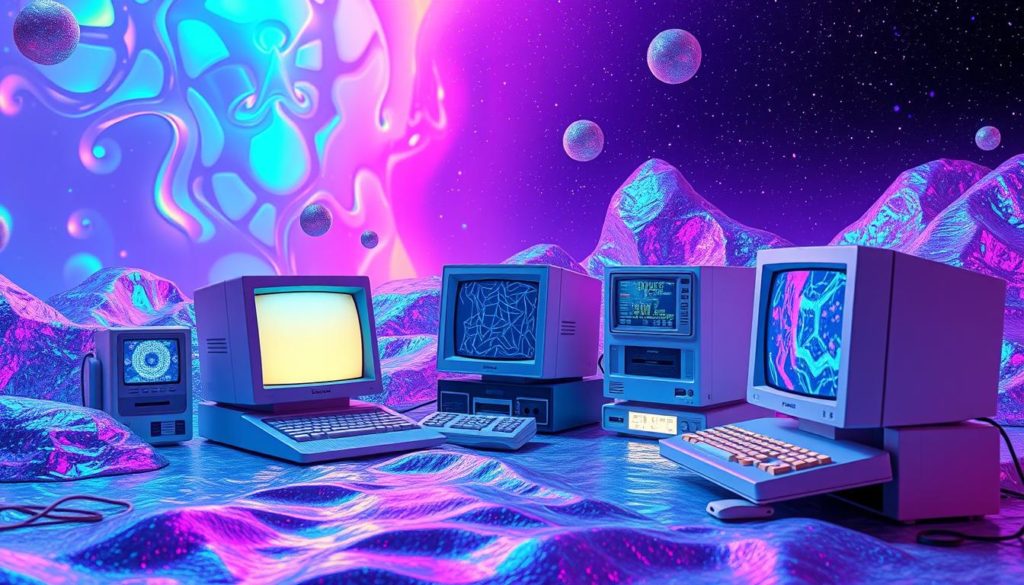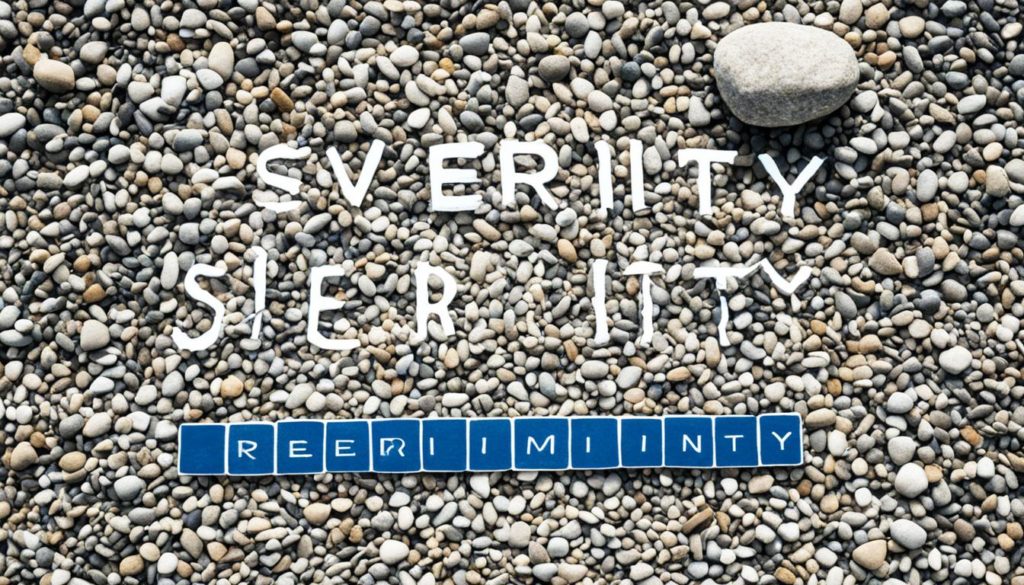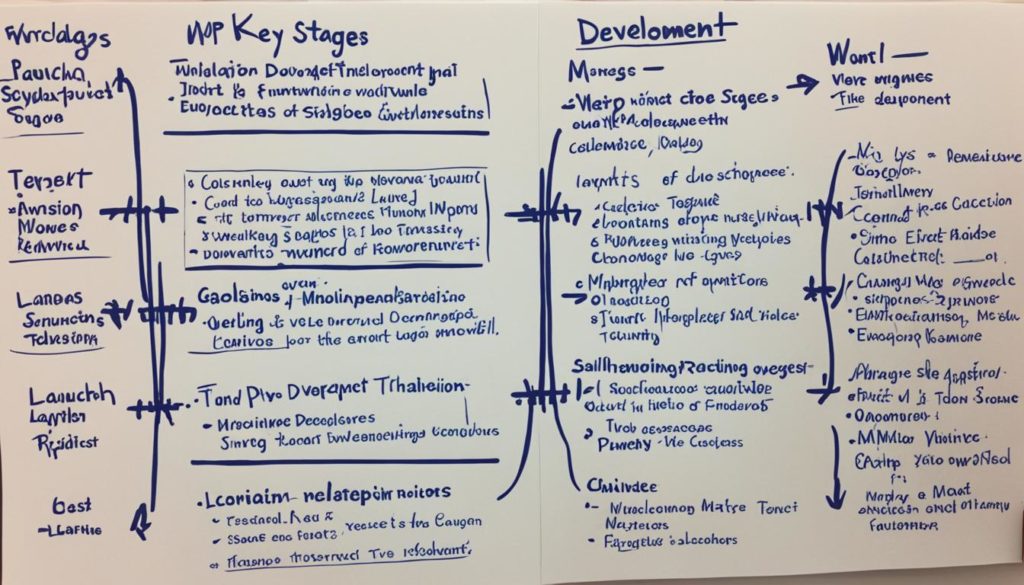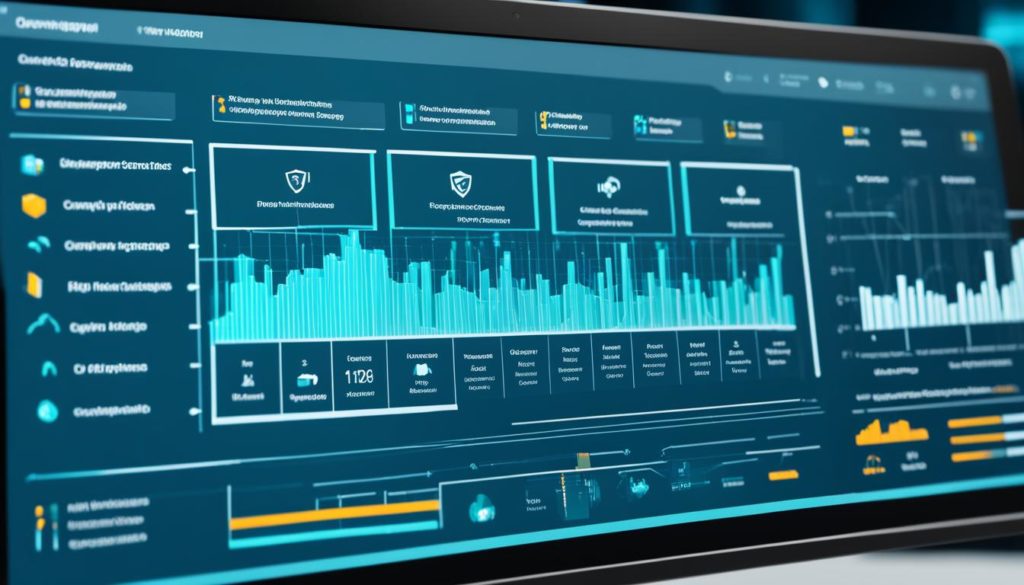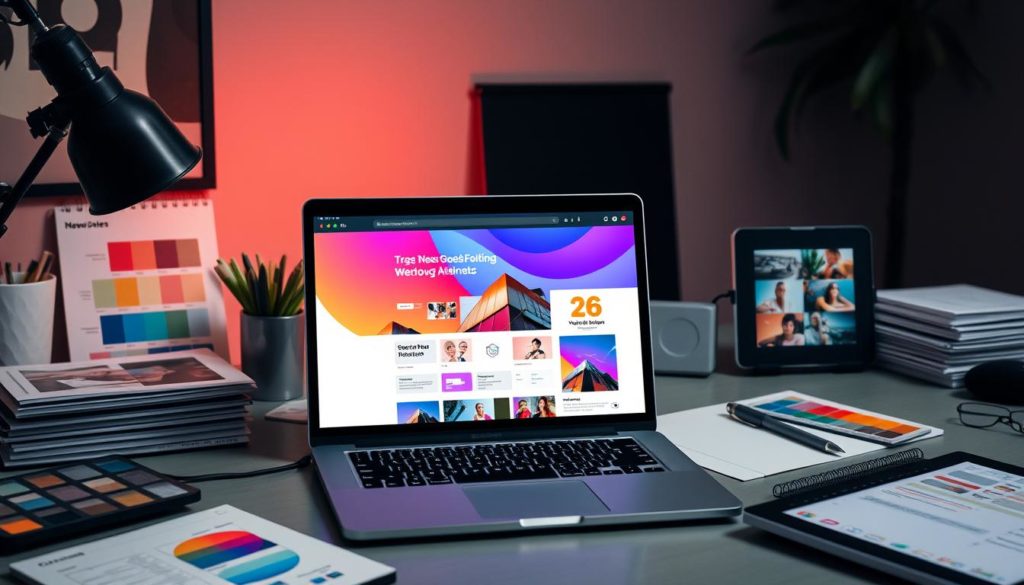
Did you know interactive content is twice as likely to grab a visitor’s attention than static content? This shows a big change in web design trends for 2024. Now, there’s a big push for responsive design and better user experience. These changes are not just about looks but also about working well and being relevant.
Web design is getting bold, with styles like Y2K and custom fonts. With tools like Siter.io, making a good-looking and useful website is easier than ever. Keeping up with trends helps a company stand out and build trust with its audience.
Keeping up with design trends is essential, not just a nice-to-have. It means using cool features like unique cursors and tooltips or special fonts from designers like Tré Seals. These updates aim to make websites more engaging and memorable.
Key Takeaways
- Interactive content can double engagement compared to static content.
- Custom typefaces and hand-created lettering are on the rise.
- No-code design tools like Siter.io are revolutionizing website creation.
- Responsive design is crucial for maintaining market relevance.
- Staying updated with design trends fosters customer trust and credibility.
Interactive and Immersive Experiences
In 2024, web design is getting more advanced and interactive. This is thanks to new technology. Features like rollover effects and gamification are key to making websites easy to use.
Gamification
Gamification makes websites more fun and engaging. It turns boring tasks into enjoyable ones. This helps websites stand out and build a strong brand.
Immersive Unrealistic 3D Worlds
New tech lets us create stunning 3D worlds online. Soon, over 30% of websites will have these immersive features. They look great and work well, thanks to Material Design.
Interactive Product Displays
Interactive product displays are changing online shopping. They let users see products in detail. This makes shopping more fun and helps brands build a strong brand identity.
In 2024, about 25% of websites will use these displays. They make websites more memorable and user-friendly. This trend is making the web more immersive and personal.
Minimalist Design and Mobile Optimization
Minimalist design and mobile optimization are key trends in web development. They aim for user-friendly digital experiences. Minimalist design focuses on simplicity, using white space to reduce distractions.
Google values fast load times for better search rankings. These designs fit perfectly with SEO practices.
The Rise of Minimalist Design
Minimalism combines function and beauty, using a few colors. Brands like Spotify and ETQ Amsterdam show its success. They have simple yet attractive websites.
White space in minimalist design cuts down on clutter. It makes it easier for users to focus. Clean designs stay modern and relevant for years.
Blue Compass is known for its minimalist websites. They improve user-friendly digital experiences.
Ultra-minimalism, focusing on the essentials, also boosts load times and navigation.
Importance of Mobile Optimization
More web traffic comes from mobile devices, making mobile optimization crucial. Mobile-first designs ensure websites work well on all screens. This means adjusting layouts and optimizing images for faster loading.
Mobile optimization is vital for today’s smartphone users. They want quick, efficient browsing. By focusing on mobile usability, brands keep their audience engaged and happy.
The TED website is a great example of mobile optimization. It offers engaging visuals without overwhelming users, no matter the device.
Web Design Trends to Follow
As we move into 2024, new web design trends are emerging. These trends make websites look better and work better, giving users a great online experience.
Nostalgia and the Y2K Aesthetic
The Y2K aesthetic is back in web design. It brings back the fun of the late 1990s and early 2000s. With pixelated graphics and custom cursors, it adds a unique touch to websites.
This trend not only brings back memories but also brings new ideas to web design.
Dark Mode
Dark mode is becoming more popular. It makes websites easier to read in the dark and saves battery life. It also looks sleek and modern.
With more browsers supporting dark mode, it’s important for websites to adapt. Switching between light and dark modes can improve user experience and accessibility.
Increased Web Accessibility
Accessible designs are crucial. They make websites usable for everyone, following ADA compliance guidelines. This includes features like screen reader compatibility and good contrast between text and background.
Web design is key to making a good first impression. Making your website accessible can attract more visitors and leave a positive impression. By following ADA compliance, you make your website inclusive for more people.
For more on these trends, check out TheeDigital’s blog.
Artificial Intelligence and Augmented Reality
Artificial intelligence (AI) and augmented reality (AR) are changing web design. They bring new tools and experiences to users. These technologies are key to the future of digital interaction.
AI-Driven Design Tools
AI design tools are making design faster and better. Canva’s Magic Design and Adobe’s Firefly use AI. They create stunning images quickly, saving a lot of time.
AI images are now hard to tell from real ones. This adds a new level of quality to web design.
Augmented Reality in Websites
AR in web design makes browsing more fun. It adds digital info to the real world through devices. This makes websites more interactive.
For example, AR lets users see products in 3D. They can try on clothes virtually. Amazon uses AR to show products in a new way, making customers happier and more likely to buy.
To add AR to websites, you need to understand the tech. You also need to pick a good AR platform like Vuforia. Designers use tools like Blender for 3D models.
Good AR experiences are simple and easy to use. They should work well on all devices. By following these tips, designers can create amazing AR experiences that engage users more.
AI and AR are changing how we see and use digital platforms. As they get better, we’ll see even more cool uses in web design and user experiences.
Conclusion
The web design trends of 2023 are exciting and user-focused. They include interactive and immersive experiences, minimalism, and mobile-first designs. These styles make online content smoother and more accessible for everyone.
Web accessibility is becoming a big focus, making sure everyone can enjoy online experiences. Artificial intelligence and augmented reality are being used to create smarter websites. These websites can understand and meet user needs instantly.
Looking to the future, it’s important to keep up with these changes. Web design is all about making websites both beautiful and functional. By staying current, we can make sure our websites are the best they can be for users.
FAQ
What are the main web design trends of 2023?
In 2023, web design trends include interactive sites and minimalist designs. We also see a Y2K aesthetic, dark mode, and more web accessibility. AI and AR are becoming key parts of web design too.
How is responsive design essential in modern websites?
Responsive design makes sure websites work well on all devices. It improves how users see and interact with websites, making them more accessible.
Why is minimalist design popular in web design?
Minimalist design is loved for its simplicity. It uses few colors and focuses on what’s important. This makes websites clean and easy to use.
How does mobile optimization impact user experience?
Mobile optimization is key because it makes websites work well on phones and tablets. As more people use mobile devices, well-optimized sites are more engaging.
What are the benefits of gamification in web design?
Gamification makes websites fun and interactive. It keeps users engaged and makes the experience memorable. It also helps brands stand out by creating a unique experience.
What role do immersive unrealistic 3D worlds play in web design?
Immersive 3D worlds grab users’ attention with rich visuals. They offer a memorable experience, even if they’re not compatible with all browsers. They give brands a competitive edge.
How do interactive product displays enhance user experience?
Interactive product displays let users explore products in a hands-on way. They improve the user experience and help brands by offering detailed and engaging product interactions.
What is the Y2K aesthetic, and why is it trending?
The Y2K aesthetic brings back retro elements from the early 2000s. It’s popular because it’s nostalgic and adds a unique touch to modern web designs.
What advantages does dark mode offer?
Dark mode is a visually appealing alternative to light interfaces. It might also save battery life. Its growing popularity is changing how we design websites, offering a fresh experience.
Why is increased web accessibility important?
Web accessibility makes sure websites are usable by everyone. It follows ADA guidelines to remove barriers. This approach makes websites more inclusive and improves the experience for all visitors.
How are AI-driven design tools changing web design?
AI-driven design tools help designers by automating tasks and suggesting ideas. They make design more efficient, creative, and personalized.
How is augmented reality being used in websites?
Augmented reality (AR) is used to create immersive experiences, like virtual product visualizations. Brands like Amazon use AR to let customers see products in real life, boosting satisfaction and sales.
Future App Studios is an award-winning software development & outsourcing company. Our team of experts is ready to craft the solution your company needs.



